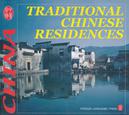中国传统民居
2002-05
Foreign Languages Press
Wang Qijun,Jia Xianfeng
107
无
In prehistoric times, dwellings were crude, and tended to be similar in design the world over; they differed only in the availability of local building materials and the topography they had to adapt to。 As the techniques of production improved, the styles of clothing, cuisine, transportation, etc。 of different peoples gradually took on their own national colors and cultural characteristics。 The same was true for the shelters that people built to dwell in, and a wide diversity of styles formed all over the world。 Chinese residences, in particular, occupy a unique place in the history of world architecture。 Color Illustrations。
The Development of Traditional Chinese Residences The Artistic Features of Traditional Chinese Residences Proper Layout:The void Accompanied by the Solid Tranquil Interior Surrounded by Solid Walls Displaying a picturesque Tone Simplicity Elegance and Connection Between Exterior and Interior Tasteful Decoration in Bright Colors Poetic and Melodious Beauty Poetic and Melodious BeautyMajor Architectural Forms of Traditional Chinese Residences The Courtyard Houses of Beijing Residences in Qixian County,Shanxi Province Cave Dwellings Residential Buildings in Southern Anhui Province Residential Buildings in the Southern Region of Rivers and Lakes Red—brick Dwellings in Quanzhou Earthen Buildings in Fujian Province Fortified Compound in Southern Jiangxi Province The U—shaped Compounds of the Hakka Fortified B uildings in Kaiping Flagstone Buildings in Guizhou Province Residential Buildings of the Koreans Mongolian Yurts Residential Buildings of the Uygurs Houses on Stilts Residential B uildings in Lij iang The Houses of the Bai Tibetan Fortified Manor Houses Appendix Locations of Major Types of Chinese Residences

无
图片比较好,但是这个不适合学术使用,很多术语言辞翻译不太专业。